- Home
- entertainment
- news
- 27 details you might have missed in the 'Harry Potter' movies
27 details you might have missed in the 'Harry Potter' movies

- The "Harry Potter" franchise is one of the most beloved of all time, spawning spin-offs, merchandise, theme parks, Pottermore, and the entire Wizarding World.
- Potterheads pride themselves on their knowledge of the "Harry Potter" story, but even the most eagle-eyed viewers may miss some details in the films.
- Here, we run through 27 magical details you might have missed from all eight "Harry Potter" movies.
- From Dobby riding a llama in "The Goblet of Fire" to an appearance of Stephen Hawking's "A Brief History of Time" in "The Prisoner of Azkaban," there are bound to be things you've never noticed before.
In 'Prisoner of Azkaban,' there's a wizarding world version of Cheerios called Cheeri-Owls.
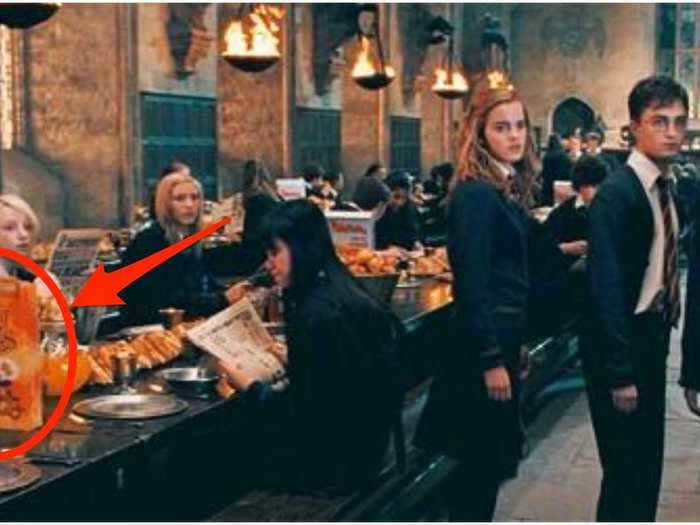
If you look closely during one breakfast scene in "The Prisoner of Azkaban," you can clearly see a Wizarding World version of the breakfast cereal Cheerios.
In the Harry Potter universe, however, they'e called Cheeri-Owls — much more exciting than our muggle version.
The end credits of 'Goblet of Fire' feature this magical disclaimer: 'No dragons were harmed in the making of this movie.'
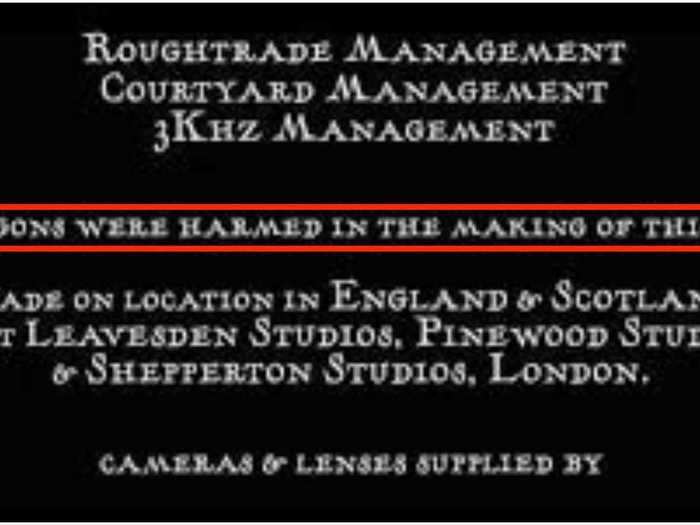
Baby Norbert the dragon was featured in "The Sorcerer' Stone" as the pet Hagrid had to give up, but it wasn't until "The Goblet of Fire" that we saw fully-grown dragons as part of the Triwizard Tournament.
While every film features an end credits "no animals were harmed in the making of this movie" disclaimer, the makers clearly felt the needed to ensure audiences knew magical creatures were safe, too.
The Ministry of Magic's access code is 6-2-4-4-2, which spells out m-a-g-i-c.
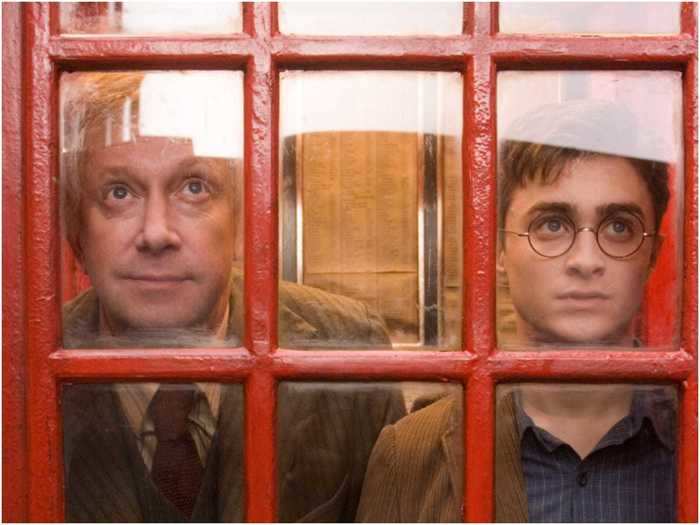
When Harry is summoned to the Ministry of Magic in "The Order of the Phoenix" for using magic outside of school (he warded off a couple of dementors with a patronus charm), he is escorted by Arthur Weasley.
Arthur takes Harry into a phone box, wherein he dials a number, and the phone box descends below into the Ministry. It's a neat little trick, but the number Arthur dials is 6-2-4-4-2, which spells out m-a-g-i-c on telephone dials. This is probably not the most secure password for the Ministry of Magic to have, but is a nice detail for the filmmakers to include.
In 'Prisoner of Azkaban,' a wizard is reading Stephen Hawking's 'A Brief History of Time.'
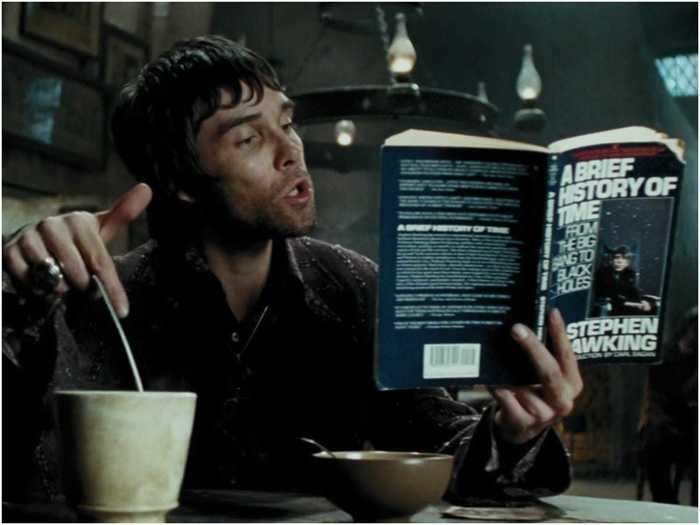
This wizard is pretty notable in this scene from the Leaky Cauldron — he's stirring his coffee using magic, twirling his finger in the air while his spoon stirs the drink for him.
This trick probably made you miss the title of the book he is reading: Stephen Hawking's "A Brief History of Time." No word yet on whether Hawking was a muggle or not.
In 'The Sorcerer's Stone,' the inscription on the Mirror of Erised reads: 'I show not your face but your heart's desire.'
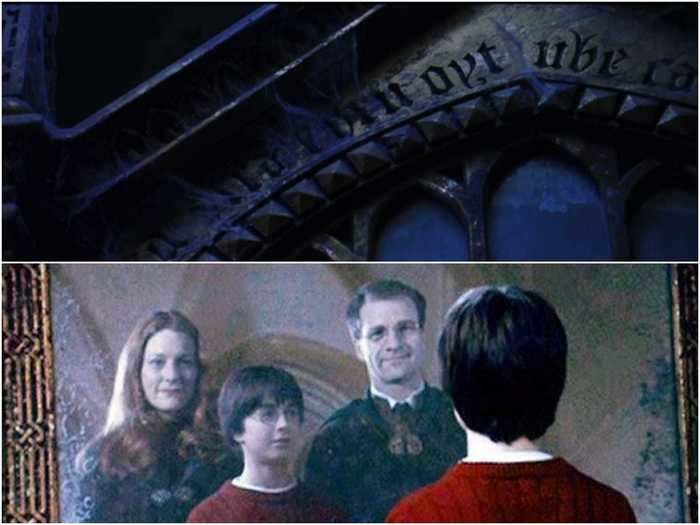
While most Potterheads know that "Erised" is "desire" spelt backwards, you may have missed the inscription at the top of the mirror.
The text reads: "Erised stra ehru oyt ube cafru oyt on wohsi," which, read backwards, reads: "I show not your face but your heart's desire."
This basically tells the user exactly what the mirror does, as Harry finds out when he sees his parents staring back at him.
In 'Goblet of Fire,' we catch a shot of the Deathly Hallows symbol way before we even knew what they were.
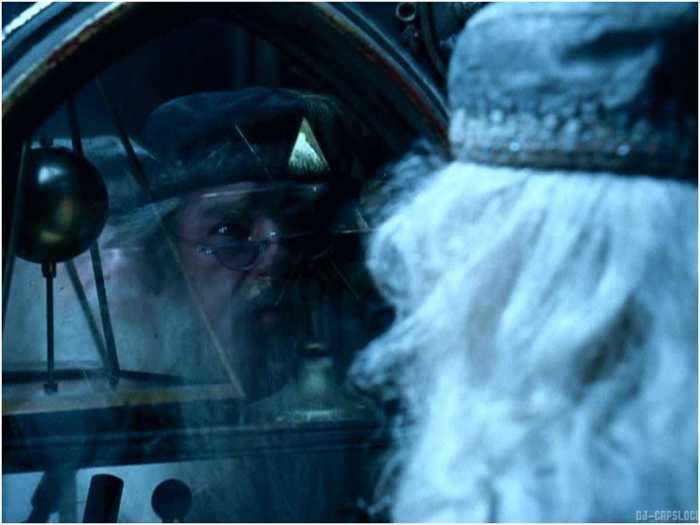
Eagle-eyed viewers spotted this symbol of the deathly hallows way back in "The Goblet of Fire," a full three movies before we were introduced to them.
The deathly hallows symbol is a triangle (representing the invisibility cloak), with a line running through the center (representing the elder wand), with a circle inside (representing the resurrection stone). You can see these symbols in the glass cabinet Dumbledore is looking into here.
In 'The Sorcerer's Stone' scene where Neville gets a remembrall, he can't remember what he's forgotten — but it's probably his robe, as he's the only one not wearing one.
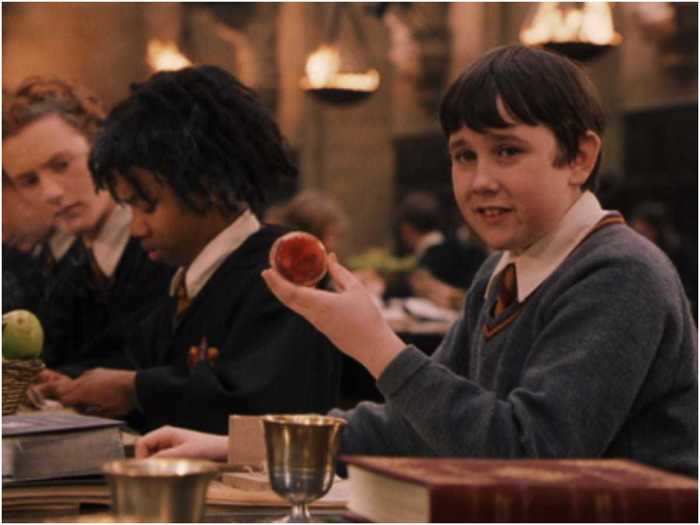
In this "Sorcerer's Stone" scene, Neville receives a remembrall from his grandmother. A remembrall is a magical object with white smoke inside that turns red whenever the holder has forgotten something.
Neville notes that he can't remember what he's forgotten, but he is clearly the only one in this scene who isn't wearing his black robe. Instead, he's sat at the table with just his jumper on, so we're pretty sure he forgot his coat.
Severus Snape is still fighting for the good guys even when he duels McGonagall in 'Deathly Hallows — Part II.'
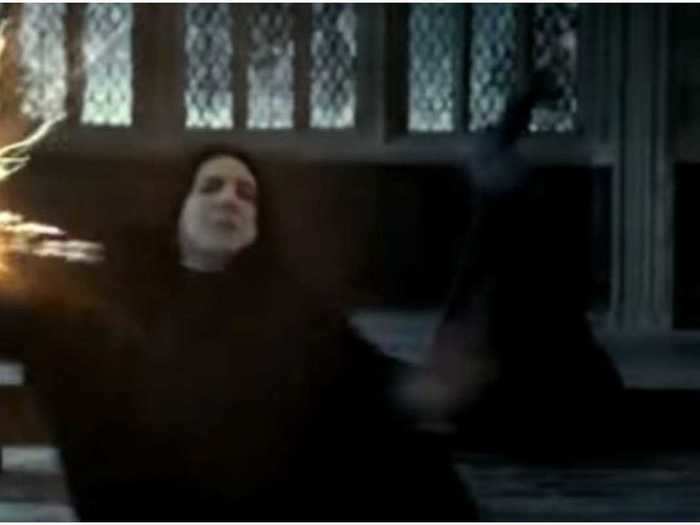
Just before the Battle of Hogwarts, and just after Harry confronts Snape, Professor McGonagall steps in to defend her former student and duels Severus.
Snape, however, is clearly not interested in fighting, and instead just uses defense charms to protect himself. He cleverly deflects McGonagall's spells so they hit the two death eaters (Alecto and Amycus Carrow) behind him, and then he collects their wands just before he flees through the window.
Later, we find out Snape was on the good side all along, so in retrospect this duel with McGonagall shows that he was actually helping by knocking out the death eaters and taking their wands.
In 'Goblet of Fire,' the Beauxbatons students do a very familiar muggle dance: the Macarena.
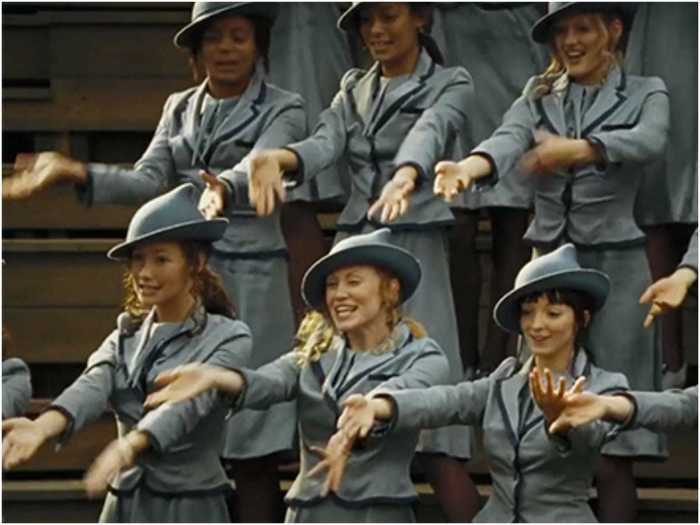
The entrance of both the Beauxbatons and Durmstrang students is one of the best scenes in "The Goblet of Fire," at once entrancing us with its cool visuals and opening up the Wizarding World beyond Hogwarts.
However, a little bit of muggleness creeps in to the Beauxbatons' students dance routine just before the beginning of the third trial. If you watch closely, you can actually see they are doing the "Macarena."
In 'The Half-Blood Prince,' Slughorn's feet give him away when he is disguised as an armchair.
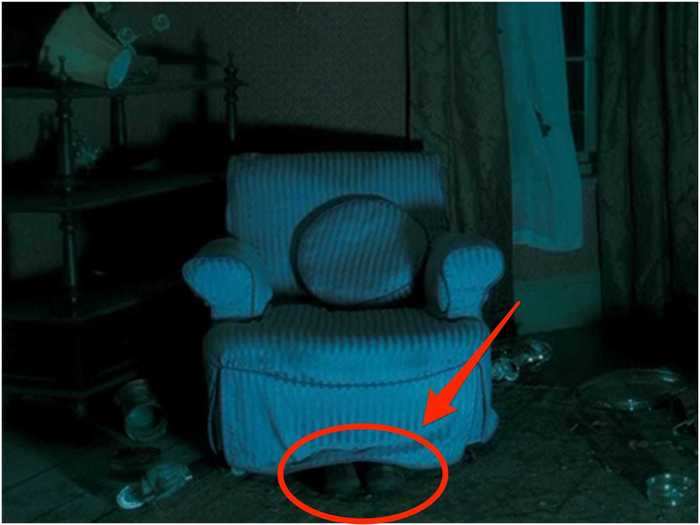
Horace Slughorn was a great new addition to the Hogwarts teaching staff, but he was initially reluctant to join the team. To avoid visitors, he made his house (actually owned by muggles) look like it was broken into.
Meanwhile, he disguised himself as an armchair. It's a pretty good attempt, but unfortunately for him, his feet sticking out of the bottom gave him away.
Slughorn drinks a vial of liquid luck right before the Battle of Hogwarts in 'Deathly Hallows — Part II.'
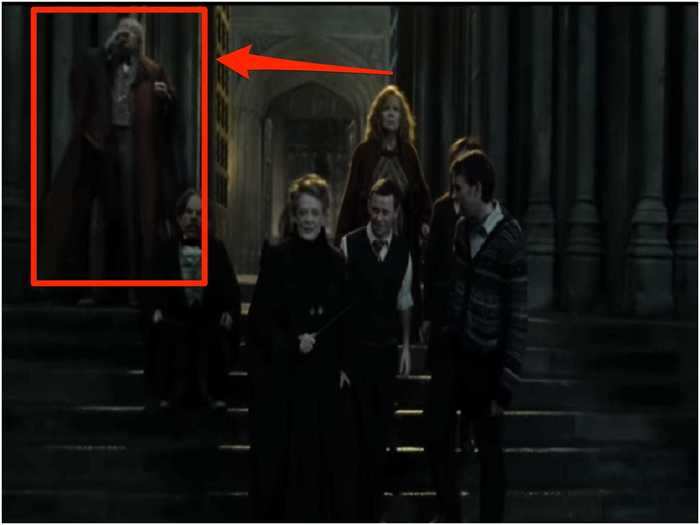
Slughorn is also part of another nice detail in "The Deathly Hallows — Part II." Right before the Battle of Hogwarts, just before he, McGonagall, Mrs Weasley and co cast a protective shield around the castle, he drinks a vile of felix felicis — aka liquid luck.
This is a nifty idea from Slughorn, and he ended up surviving the battle, so it clearly worked. His drinking of that potion could even be the entire reason the good guys won.
In 'Chamber of Secrets,' Ron wears robes that are noticeably older and dingier than his peers', probably because they were hand-me-downs.
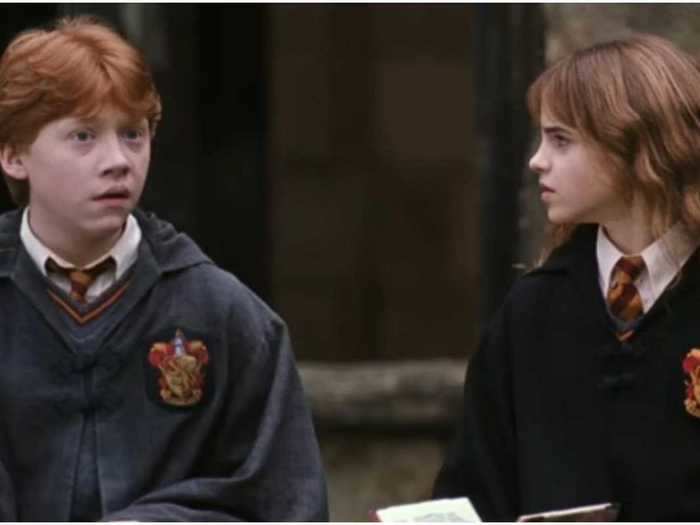
Ron Weasley doesn't come from a very well-off family, something Draco Malfoy crudely makes fun of in "The Sorcerer's Stone."
The costume designers of the Potter series pay attention to this detail, as Ron wears robes that are clearly much shabbier, older, and paler in color to the rest of the students. His are light gray, closer to the color of the school jumpers, compared to the jet black of the other students' robes. The Hogwarts crest also looks like it has been taken from another robe and sewn on.
Ironic, though, when you find out the school uniforms in the film were actually made by luxury department store Harrods.
In 'The Sorcerer's Stone,' the actor who played Lord Voldemort is credited as 'He Who Must Not Be Named.'
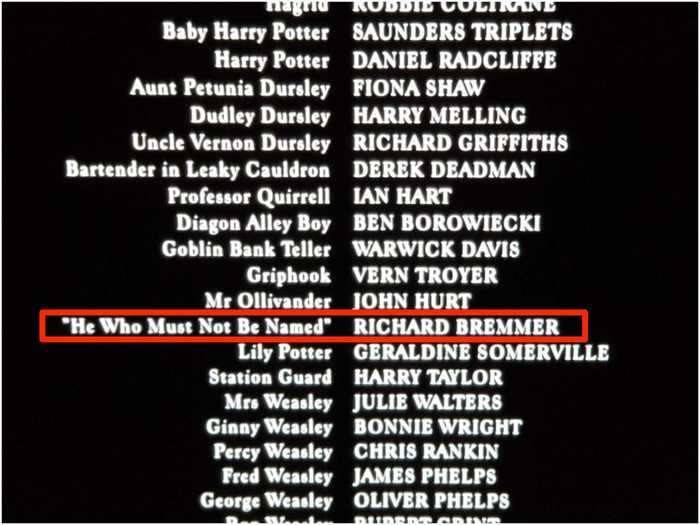
Ralph Fiennes played Voldemort in "The Goblet of Fire" onward, but we first see the dark lord in "The Sorcerer' Stone" where he was forced to live as part of Professor Quirrell, on the back of his head.
It was Richard Bremmer who played him in this movie, and his character is listed as "He Who Must Not Be Named" in the end credits rather than Voldemort.
In 'The Goblet of Fire,' a reflection of Nagini slithering can be seen in the Warner Bros. logo.
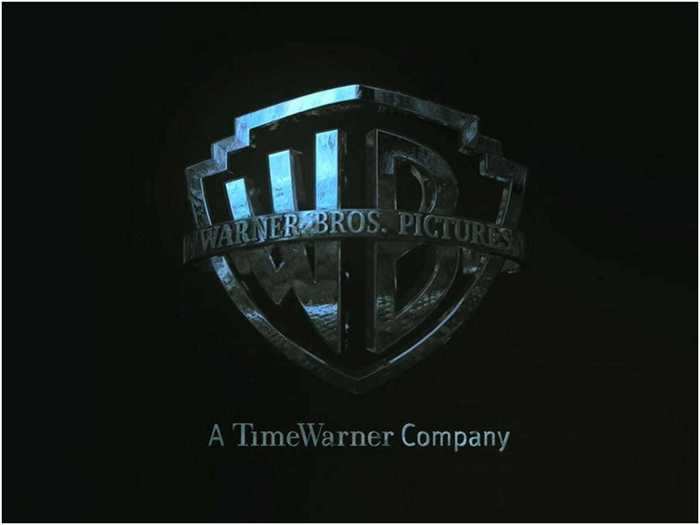
While there's a popular fan theory that the snake Harry set free in London Zoo in "The Sorcerer's Stone" was actually Nagini, it's not true.
Instead, the first time we meet Nagini is in "The Goblet of Fire," where the first scene features Nagini slithering up the stairs to Peter Pettigrew, Barty Crouch Jr, and Lord Voldemort. The movie tees this scene up by showing Nagini's reflection in the Warner Bros. logo.
In 'The Half-Blood Prince,' when we see Tom Riddle's childhood bedroom, there's a photo of the cave where eventually hides his horcrux.
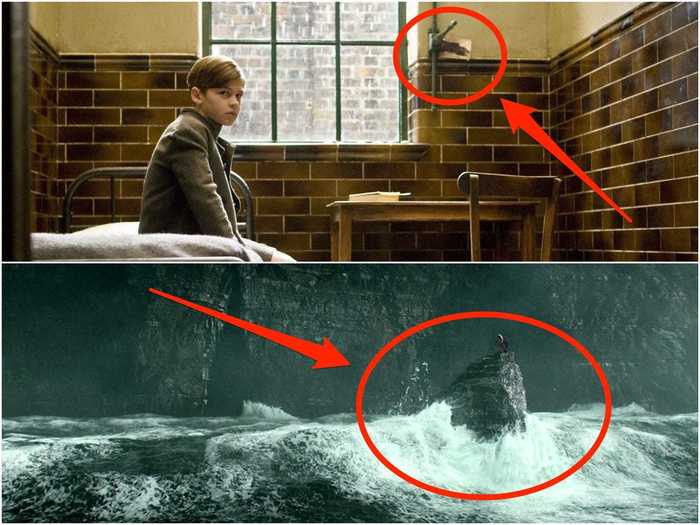
The flashbacks to Voldemort's childhood are some of the most intriguing scenes in the entire film series. In "The Half-Blood Prince," we get to see a younger Dumbledore meet Tom Riddle as a child (played by Ralph Fiennes' actual nephew, Hero Fiennes).
In Riddle's bedroom, you can clearly see a picture of the cave where he later hides his horcrux (the one Harry and Dumbledore visit later on in the movie) attached to his wall.
There are also seven rocks on the windowsill in that bedroom, foreshadowing Riddle splitting his soul into seven horcruxes.
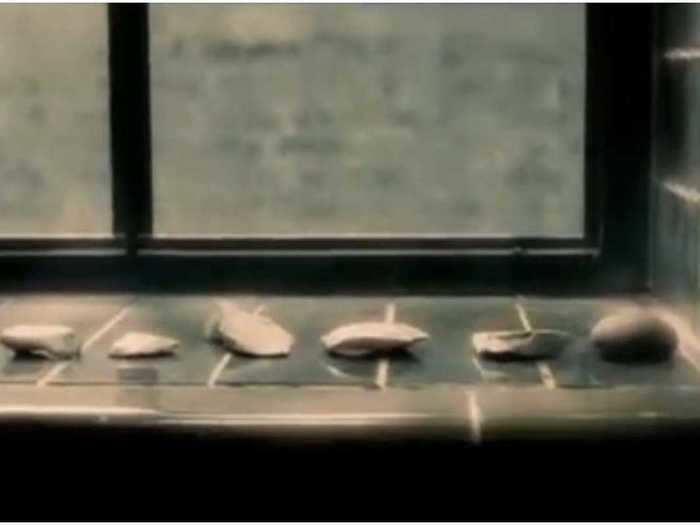
In the flashback to young Tom Riddle's bedroom, we also see seven stones lined up — the number of horcruxes he eventually procured as Lord Voldemort, foreshadowing his descent into dark magic.
In 'Deathly Hallows — Part II,' Harry, Ron, and Hermione fight giant spiders, a troll, dementors, and a werewolf — all enemies they fought in the first three movies.
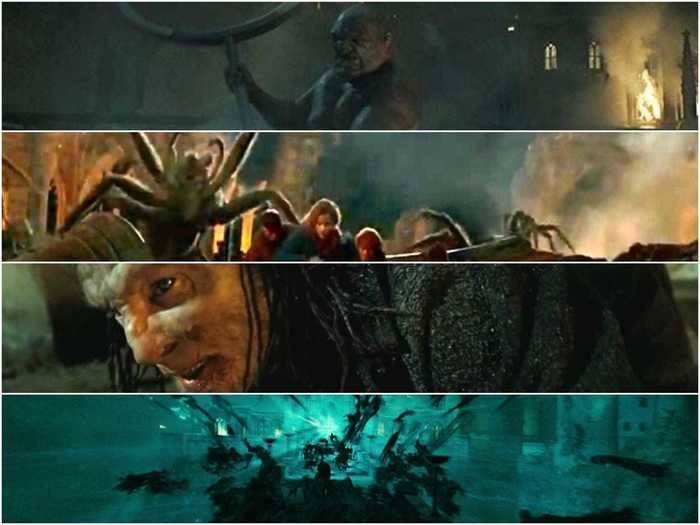
"The Deathly Hallows — Part II" concludes the Potter saga pretty perfectly, and it does so by flashing back to the first few entries in ways you may not notice at first.
In the climactic Battle of Hogwarts, Harry, Ron, Hermione, and co. fight off trolls, acromantula (giant spiders), a werewolf (Fenrir Greyback), and dementors. These are all enemies they fought in the first three movies.
In "The Sorcerer's Stone," Harry and Ron saved Hermione from a cave troll in the girl's bathroom; in "The Chamber of Secrets," Harry and Ron fought off Aragog and his colony of acromantula; and in "The Prisoner of Azkaban," the trio faced a werewolf (Remus Lupin) and a horde of dementors.
In 'The Sorcerer's Stone,' you can see McGonagall's name on the Quidditch trophy right next to James Potter.
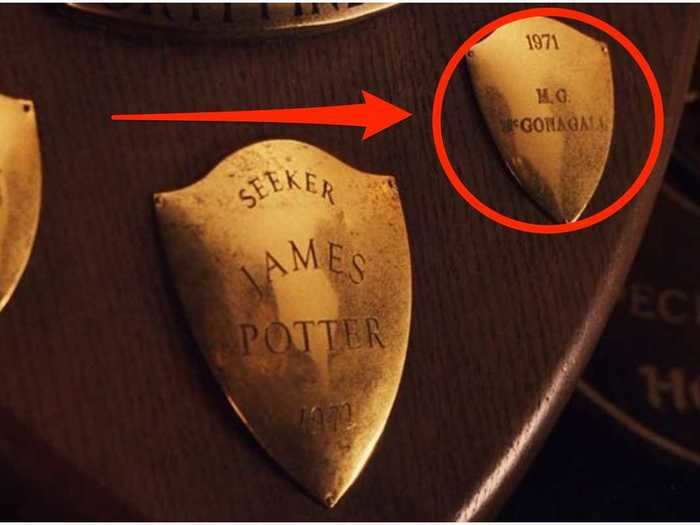
Seeing Hermione soothe Harry's Quidditch anxieties by showing him the name of James Potter, his dad, on an old Quidditch trophy is an emotional plot point in "The Sorcerer's Stone."
However, you may not have noticed that Professor McGonagall's name also appears on the trophy. The date shows that McGonagall earned her award in 1971 when she was a Hogwarts student, which doesn't actually make sense considering she appears as a Hogwarts professor in "Fantastic Beasts: The Crimes of Grindelwald," which was set in 1927.
In the same cabinet, you can see Tom Riddle's award for special services to Hogwarts right behind the Quidditch trophy.
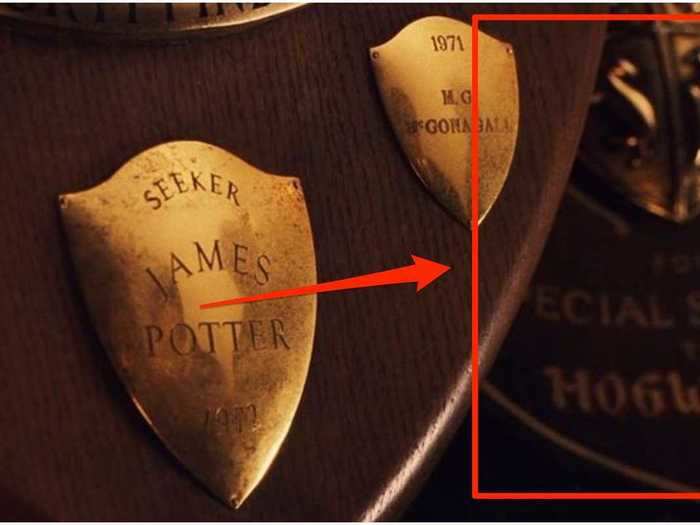
In the exact same shot, you can also see another award behind James Potter and Minerva McGonagall's Quidditch trophy. This one is an award for special services to Hogwarts school, and it belongs to Tom Riddle.
Riddle falsely earned this award for framing Hagrid and his pet spider Aragog for the murder of Moaning Mrytle back when they were students. This is revealed in "The Chamber of Secrets," but we later learn that Hagrid and Aragog are innocent and it was Riddle and his basilisk who were responsible all along.
In 'The Sorcerer's Stone,' you can see Aunt Petunia dying Dudley's old clothes gray for Harry's school uniform, which was a scene in the books.
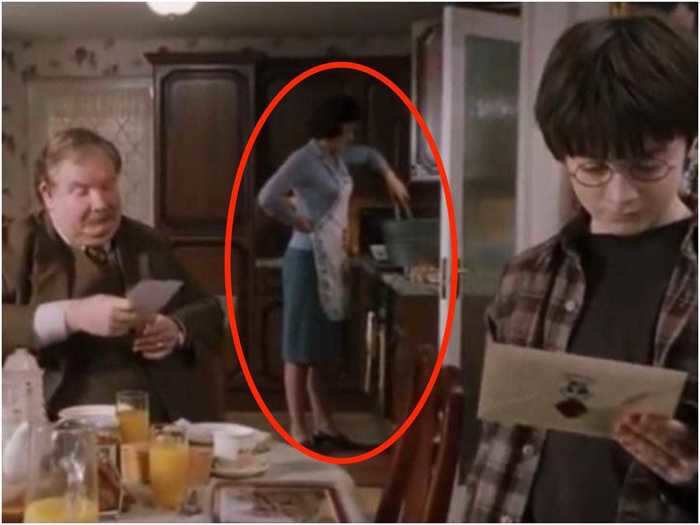
In the books, there's a scene where Aunt Petunia dyes her son Dudley's old clothes gray so that Harry can wear them as his school uniform. The clothes are huge on him, and this is one of many things the Dursleys do that shows their vile treatment toward Harry.
This detail, however, is never mentioned explicitly in the films, but you can see Aunt Petunia dying the clothes in the background of "The Sorcerer's Stone."
In 'Chamber of Secrets,' one of the options on Molly Weasley's magical clock is 'prison.'
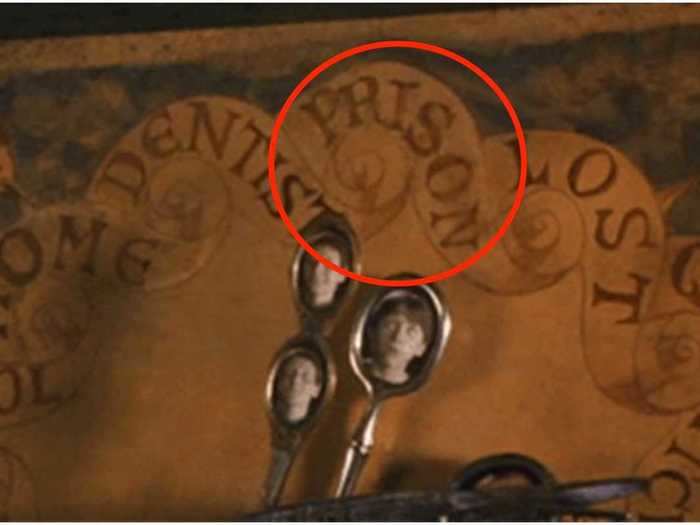
The Weasleys' house, The Burrow, is one of the most charming homes ever depicted in movies, introducing viewers and Harry to the magical quirks of a wizarding family's household.
Molly Weasley's clock is one of those quirks, with the object displaying where each member of her family is at all times. One of the options on the clock is "prison," which the Weasleys never end up in, but it's a funny element nonetheless.
Another option on the clock is 'dentist,' even though dentists don't exist in the magical world.
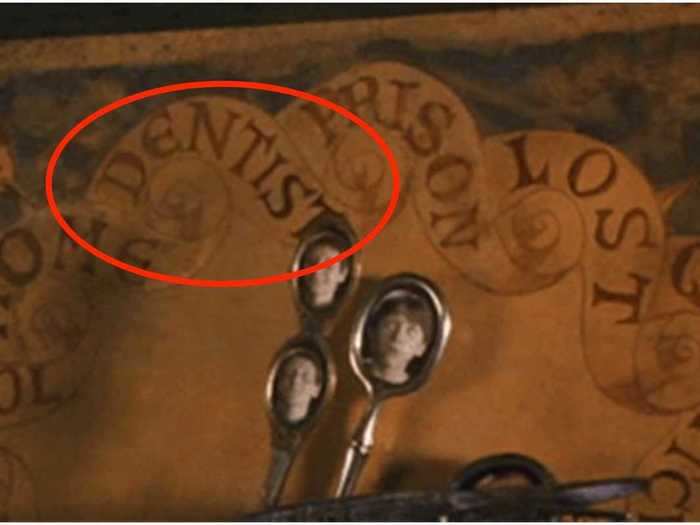
Dentists don't actually exist in the wizarding world. We find this out in "The Half-Blood Prince" when Hermione explains to Professor Slughorn that her parents are dentists and Slughorn is perplexed, asking if that is considered a dangerous profession.
However, "dentist" was added to the clock at The Burrow for Arthur Weasley, who has a loving fascination of all things muggle-related.
In 'Prisoner of Azkaban,' Newt Scamander appears on the Marauder's Map.
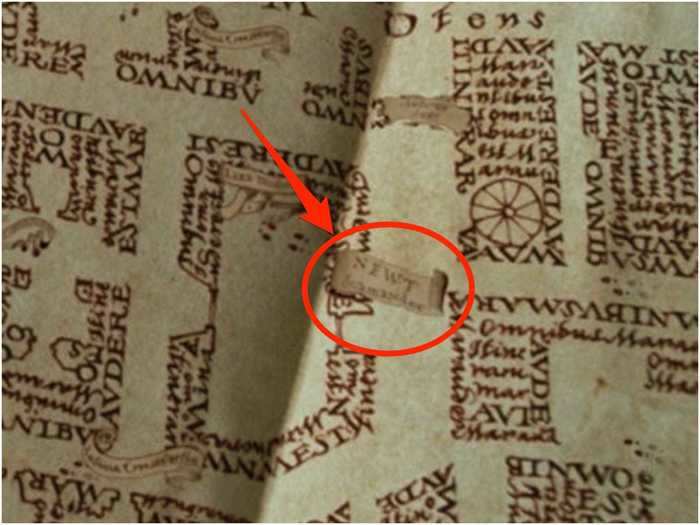
We first see Newt Scamander in 2016's "Fantastic Beasts and Where to Find Them," played by Eddie Redmayne.
But the character has a sneaky cameo in "The Prisoner of Azkaban." During the movie, after he is given the enchanted parchment by Fred and George, Harry closes the Marauder's Map by saying "mischief managed." But just before he does, you catch a glimpse of the Hogwarts castle and its occupants. If you pause the movie and look closely, you can see Newt Scamander's name on the map.
In 'Goblet of Fire,' Dobby briefly appears at the Quidditch World Cup camp.
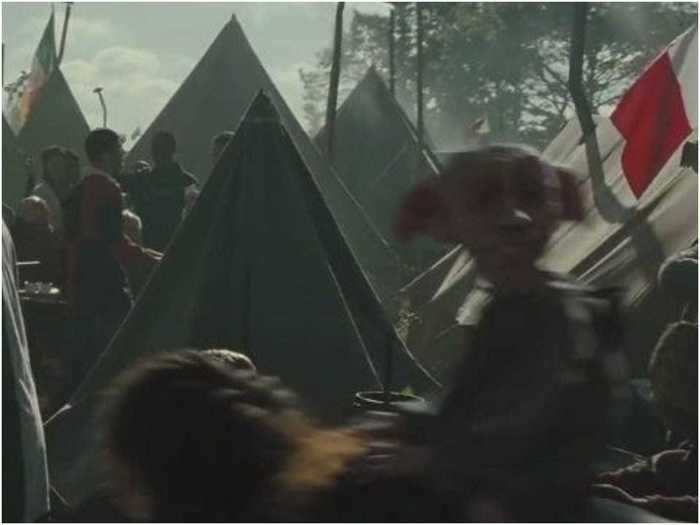
While Dobby (voiced by Toby Jones) officially appears in "The Chamber of Secrets," and "The Deathly Hallows" parts one and two, he has unofficial cameo in the fourth film.
You can see Dobby for the briefest of seconds at the Quidditch world cup camp, and he appears to be riding a llama.
In 'Order of the Phoenix,' Sirius says 'nice one, James' when Harry disarms Lucius Malfoy, the same thing he said to Harry's dad in an earlier flashback.
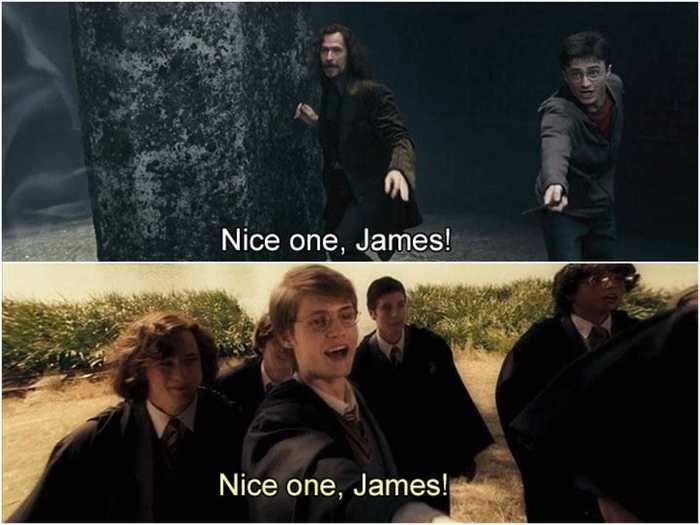
When Harry and Sirius take on death eaters at the battle of the Ministry of Magic, Harry disarms Lucius Malfoy. Sirius notes: "Nice one, James!"
This is the same thing a young Sirius said to James Potter, Harry's dad, when the latter cast a spell on Severus Snape in a flashback to Snape's childhood we saw earlier on in the film.
Tom Felton's then-girlfriend played his wife in the 'Deathly Hallows — Part II' epilogue.
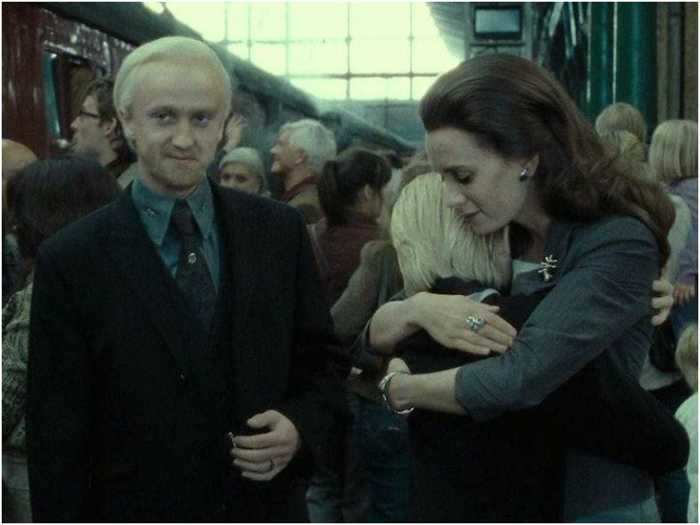
The epilogue in "The Deathly Hallows — Part II" shows us Harry, Ron, Hermione, Ginny, and Draco when they are all grown up and married with their own children.
Draco, played by Tom Felton, can be seen saying goodbye to his son with his wife — and it was Felton's then-girlfriend who played his wife in this scene.
Felton confirmed this to MTV, telling reporters: "She was at first reluctant, but I pulled her arm and twisted it. She was filming with me for three days at King's Cross [railway station in the U.K.]; we were very excited."
In 'The Sorcerer's Stone,' Harry's scar burns because Quirrell has his back to him, meaning Voldemort, on the back of Quirrell's head, is facing him.
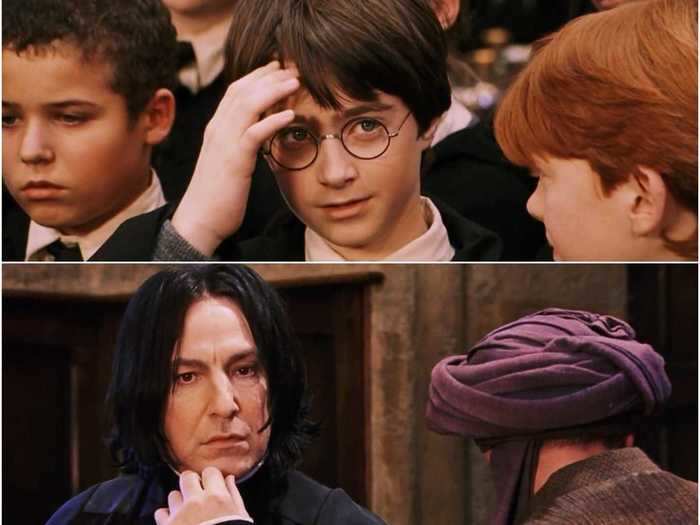
In "The Sorcerer's Stone," Harry catches Professor Snape glancing at him, and at the same time his scar burns. Initially, we think his scar is burning as a warning sign to watch out for Snape, but we later learn that Snape is the one trying to help him, while Quirrell is the real villain.
In hindsight, we can work out that in this scene Harry's scar was burning because of Quirrell instead of Snape, as they were sat next to each other. However, there's more to it than just that.
Quirrell is sat with his back to Harry, so Harry can only see the back of his head, which is covered by his turban. We later learn that Voldemort is part of the back of Quirrell's head, hidden beneath said turban, so in this scene Voldemort is actually staring right at Harry — pretty creepy when you think about it.
READ MORE ARTICLES ON
Popular Right Now
Advertisement